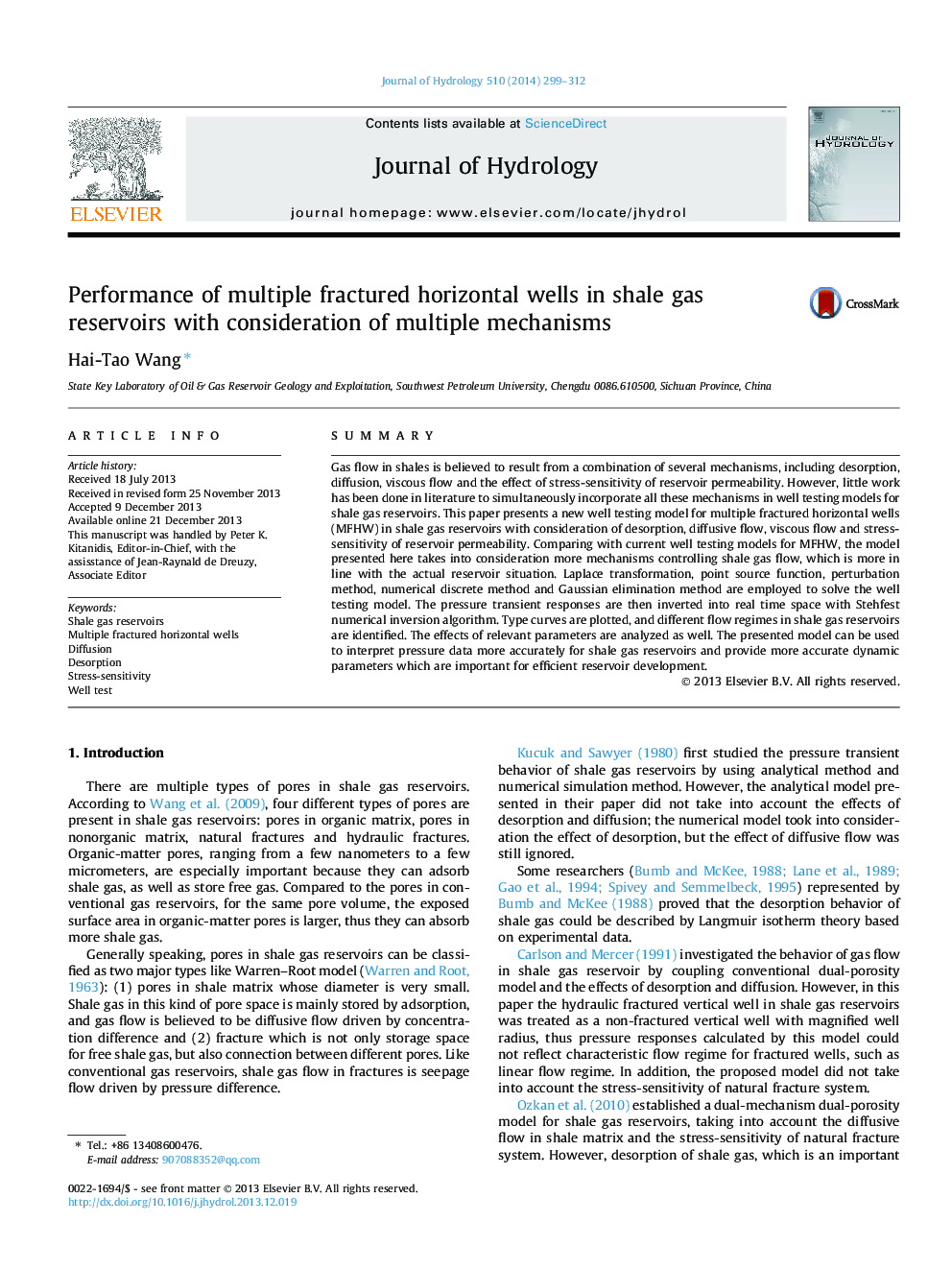| Article ID | Journal | Published Year | Pages | File Type |
|---|---|---|---|---|
| 6413208 | Journal of Hydrology | 2014 | 14 Pages |
â¢Established a well testing model for MFHW in shale gas reservoirs.â¢The desorption, diffusion, viscous flow and stress-sensitivity were considered.â¢Multiple mechanisms are simultaneously incorporated into the well testing model.â¢Plotted the perfect typical curves of MFHW in shale gas reservoirs.â¢Analyzed the characteristics of typical curves based flow mechanisms.
SummaryGas flow in shales is believed to result from a combination of several mechanisms, including desorption, diffusion, viscous flow and the effect of stress-sensitivity of reservoir permeability. However, little work has been done in literature to simultaneously incorporate all these mechanisms in well testing models for shale gas reservoirs. This paper presents a new well testing model for multiple fractured horizontal wells (MFHW) in shale gas reservoirs with consideration of desorption, diffusive flow, viscous flow and stress-sensitivity of reservoir permeability. Comparing with current well testing models for MFHW, the model presented here takes into consideration more mechanisms controlling shale gas flow, which is more in line with the actual reservoir situation. Laplace transformation, point source function, perturbation method, numerical discrete method and Gaussian elimination method are employed to solve the well testing model. The pressure transient responses are then inverted into real time space with Stehfest numerical inversion algorithm. Type curves are plotted, and different flow regimes in shale gas reservoirs are identified. The effects of relevant parameters are analyzed as well. The presented model can be used to interpret pressure data more accurately for shale gas reservoirs and provide more accurate dynamic parameters which are important for efficient reservoir development.
